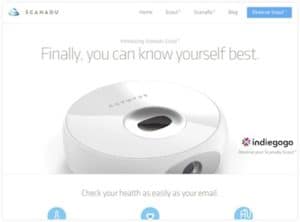Last week, I keynoted the Medical Design & Manufacturing Show in Chicago, with a focus on both the future of health care and manufacturing technology.

The folks over at DesignNews and other publications picked up my talk; here’s an article they ran which covered some of my remarks.
The trend toward “bio-connectivity” is gaining momentum, and medical device manufacturers need to be ready to bring that connectivity to next-generation products, a futurist at the Medical Design & Manufacturing Show said this week.
“The number of in-person visits to hospitals is decreasing and the number of bio-connective, virtual visits is increasing,” Jim Carroll, futurist and author, told a gathering of engineers at the show.
Carroll challenged engineers and device manufacturers there to examine those trends and to be ready use them to innovate their products. He cited statistics showing that there are now 17,000 healthcare software apps available for smartphones, and noted that 78 percent of consumers have expressed interest in such apps. Moreover, he predicted that 500 million smartphone users will be employing health and wellness apps in the next few years. ”The patient is changing; the consumer is changing,” he noted. “And we need to align ourselves to the changes that are occurring.”
Today’s doctors are more likely to do patient consultations over Skype, Carroll said, adding that 40 percent of physicians are now willing to track patients via text messaging, email, and Facebook. He cited examples of such companies as Withings Inc., which makes a blood pressure monitor for use with iPhones and iPads, and MedCottage, which sells one bedroom “granny pods” that can be placed in the backyards of families caring for elderly patients. The cottage incorporates cameras and sensors, enabling patients to be monitored and managed from afar.
Carroll also pointed to a growing number of diabetes management technologies that enable patients to monitor themselves at home and share their data with physicians.
Some high-level healthcare executives have gone as far as to say that the need for dedicated central facilities is changing, Carroll said. “One CEO said that the concept of a hospital as a physical place is disappearing,” he told the audience of engineers. “Eventually, it’s going to go virtual.”
Carroll warned engineers not to discount such trends. He described a technical conference a few years ago where manufacturing executives laughed aloud at the prospect of anyone using 3D printers. Now, he said, engineers routinely shop for such systems at technical conferences. ”World class innovators look out at the future and see a trend, not a threat,” he said. “They see an opportunity.”




GET IN TOUCH
Jim's Facebook page
You'll find Jim's latest videos on Youtube
Mastodon. What's on Jim's mind? Check his feed!
LinkedIn - reach out to Jim for a professional connection!
Flickr! Get inspired! A massive archive of all of Jim's daily inspirational quotes!
Instagram - the home for Jim's motivational mind!